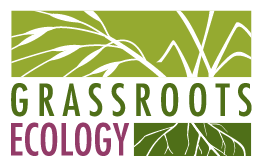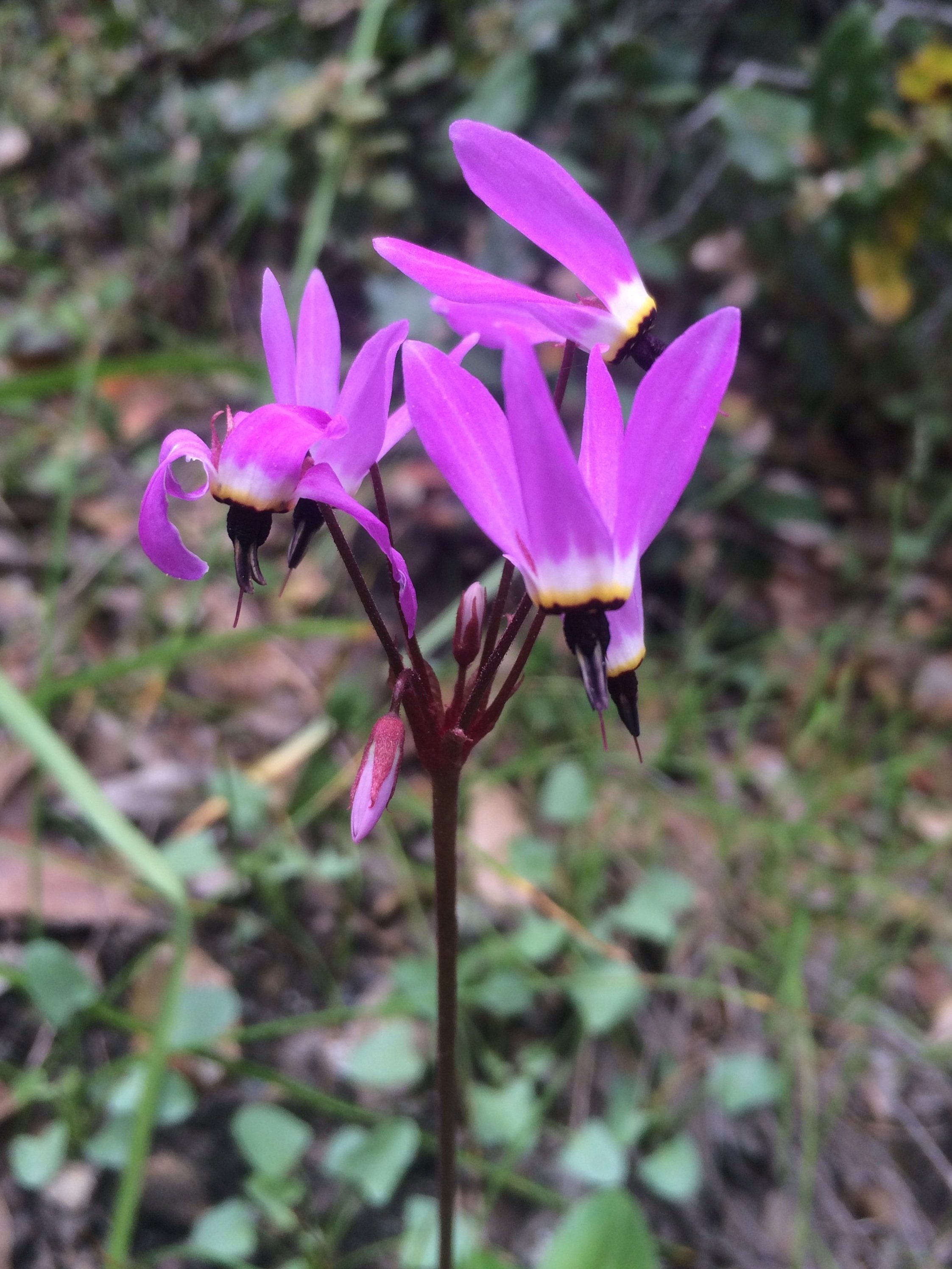Where to Find California Wildflowers in the Bay Area
Every spring the Bay Area is graced with wildflowers from open grasslands to shaded woodlands. Their bright petals attract native pollinators that buzz in the sunshine, and later, their fruits will become food for animals, and their seeds will grow new flowers for years to come.
When enjoying wildflowers, remember that you are entering a delicate ecosystem that relies on these flowers to bloom each year. Here are some tips to follow to keep our landscapes blooming:
Take Photos Not Flowers
Please don't pick the flowers. Wildflowers are delicate, and probably wouldn’t make it long once picked anyways. They will stay more picturesque in the ground.Stay on the Trail
Don’t step into the flowers. Even if you don’t see blooms, there could be seedlings popping up along trails that won’t make it if stepped on.Avoid Social and Wildlife trails
Stick with official trails to avoid accidentally stepping on wildflowers or causing erosion. You might see what looks like an unmarked trail that was caused by people damaging sensitive habitat, or a trail used by wildlife. Stick with the marked human trails!
There are so many places you can find native California wildflowers in the Bay Area, especially at Grassroots Ecology habitat restoration sites! Here are a few of our favorite flowers and where you can find them:
Chaparral Currant (Ribes malvaceum)
Chaparral currant is an early season bloomer that puts out its pink flowers as early as November when there is little else available to native pollinators. One of the most accessible places you can find a blooming chaparral currant is at the top of Vista Hill at Foothills Nature Preserve in Palo Alto. This blooming shrub is usually buzzing with bees and even a hummingbird or two.
Chaparral currant - Foothills Nature Preserve, Palo Alto
Ceanothus
Ceanothus is also a fairly early season bloomer. You’ll know this drought tolerant shrub by its many puffs of bright purple to white flowers that seem to hum with bees. There are over 60 species of ceanothus, and they are all a favorite nectar source for pollinators. You might find California lilac (Ceanothus thyrsiflorus) in a shady woodland, hairy Jimbush (Ceanothus oliganthus) in an oak woodland, and Ceanothus thyrsiflorus var.griseus growing as a groundcover. The ceanothus below was planted a few years ago by our volunteers at Cooley Landing in East Palo Alto. You can find it and several others in our restoration zones near the Cooley Landing Education Center.
Ceanothus - Cooley Landing, East Palo Alto
Pacific Houndstongue (Cynoglossum grande)
Pacific houndstongue is native to California, Oregon, and Washington. It blooms early in the year in January and February in shady dry areas. It is one of only a few native blue flowering plants in California, and is an important plant for pollinators like butterflies, moths, bees, and hummingbirds.
We see Pacific houndstongue at Stulsaft Park in Redwood City, Pearson-Arastradero and Foothills Nature Preserves in Palo Alto, as well as under the trees at Russian Ridge Open Space Preserve on Skyline Boulevard.
Pacific houndstongue - Russian Ridge Open Space Preserve
Lupine (Lupinus)
Lupines are in abundance across the spring hills! Their delicate purple flowers are an iconic sign of spring, and are a favorite of many pollinators. You can find this patch of lupines and many more at Pearson-Arastradero Preserve in Palo Alto near the Arastradero Creek trail.
Lupines - Pearson-Arastradero Preserve, Palo Alto
Shooting Star (Primula hendersonii)
You may notice pink and yellow oddly shaped flowers known as shooting stars at Stulsaft Park in Redwood City. Various species of shooting stars bloom all across California with the most common in the Bay Area being Henderson’s shooting stars whose scientific name means “little first one of spring”. Other names for them include “mosquito bills” and “sailor caps” named after different interpretations of the flower’s shape.
Shooting stars - Stulsaft Park, Redwood City
Blue Eyed Grass (Sisyrinchium bellum)
You are likely to come across blue eyed grass in most open grasslands in the Bay Area. Despite its name, this flower is actually a purple iris. There are plenty growing at Pearson-Arastradero Preserve in Palo Alto, and Byrne Preserve in Los Altos Hills, but this patch at Redwood Grove in Los Altos is one of our favorites. In the sunshine surrounded by redwood trees, these happy purple flowers greet walkers along the trail.
Blue eyed grass - Redwood Grove Nature Preserve, Los Altos
Tidy Tips (Layia platyglossa)
Stulsaft Park in Redwood City comes alive in spring with hillsides of yellow! Stulsaft has pockets of serpentinite (the California state rock) which changes the chemical makeup of the soil and allows unique flowers like tidy tips to thrive. Tidy tips are also a favorite flower of the checkerspot butterfly.
Tidy tips - Stulsaft Park, Redwood City
California Poppy (Eschscholzia californica)
The poppy is a classic symbol of California. You can see them just about anywhere from hillsides to street medians, often next to contrasting purple lupines. Two places you can be sure to see fields of poppies are at Byrne Preserve in Los Altos Hills, and Foothills Nature Preserve in Palo Alto. You can also find patches in the suburban Southgate Palo Alto neighborhood where we have been planting poppies and other native flowers in bioretention plots.
California poppies - Southgate neighborhood of Palo Alto
Yarrow (Achillea millefolium)
You can often find the white flowers of yarrow blooming in open meadows around the Bay Area. Yarrow transforms in summer and spring sending up 1-3 foot long stalks with masses of flowers that are alive with bees, butterflies and other pollinators. We plant yarrow and see it growing naturally at most of our habitat restoration sites including McClellan Ranch Preserve in Cupertino, Pearson-Arastradero Preserve in Palo Alto, Byrne Preserve in Los Altos Hills, and many others. One place you might not think to look for yarrow is in downtown Redwood City! You can find this patch of yarrow and other wildflowers right on the banks of Redwood Creek at the intersection of Veterans Boulevard and Main Street.
Yarrow and other flowers - Redwood Creek, Redwood City
California Buckeye (Aesculus californica)
The California buckeye is a large shrub or small tree that puts out bright green leaves in the spring followed by spikes of white and pink flowers. Its sweet smelling flowers attract an array of local pollinators. The tree will produce large chestnut-like fruit later in autumn. Many buckeye trees line the roads in the Santa Cruz Mountain foothills, but you can see one up close in the Gateway Garden at Pearson-Arastradero Preserve in Palo Alto.
California buckeye flowers - Pearson-Arastradero Preserve, Palo Alto
California buckeye nut - Byrne Preserve, Los Altos Hills
Ruby Chalice Clarkia (Clarkia rubicunda)
Clarkia, also known as “farewell to spring” blooms bright pink and purple in early summer. This ruby chalice clarkia at McClellan Ranch Preserve is native to California, and is a favorite of many bees, butterflies, and moths.
Ruby chalice clarkia - McClellan Ranch Preserve, Cupertino
Narrowleaf Milkweed (Asclepias fascicularis)
You can find a patch of milkweed we planted in the seasonal wetland at the bottom of the hill at Byrne Preserve in Los Altos Hills. Milkweed is a host plant for monarch butterfly butterflies. As caterpillars, they eat the plant’s thin leaves, sometimes form their chrysalis on the plant, and return as butterflies to drink the nectar of the flowers. We’ve spotted monarch munching on our milkweed at McClellan Ranch Preserve in Cupertino too!
Narrowleaf Milkweed - Byrne Preserve, Los Altos Hills
A monarch caterpillar on narrowleaf milkweed - McClellan Ranch Preserve, Cupertino
Hayfield Tarweed (Hemizonia congesta)
Once you know the smell of hayfield tarweed, you’ll always recognize that distinct smell of summer in the California hills. Its little white flowers sprinkle the hillside of dry grass at Byrne Preserve in Los Altos Hills every year when many other wildflowers have already lost their blooms and are putting their energy into making seeds for next year.
Hayfield Tarweed - Byrne Preserve, Los Altos Hills
These are only a few of the flowers you can see each spring and summer at our habitat restoration sites. You can help us increase native plant and wildflower coverage in the Bay Area by volunteering at one of our community work days. Happy wildflower scouting!
References
Bay Checkerspot - Xerces Society
Common Tidy Tips - Calscape
Milkweeds of California - Xerces Society
Ruby Chalice Clarkia - Calscape
Fritillaria affinis (checker lily) - Jepson Herbarium
By Emily Repech, Communications Manager

















